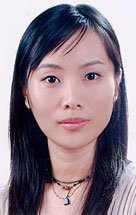| |
Chanam Lee
 New professor examining relationships
New professor examining relationships
between humans and built environment
| |
|
In addition to hiring new faculty with distinguished careers in teaching, research and service, the College of Architecture at Texas A&M University, through its ongoing signature search initiative, is also seeking young tenure-track scholars with demonstrated potential for outstanding contributions to their respective fields.
Chanam Lee, a new assistant professor in the Department of Landscape Architecture and Urban Planning, is such a scholar. A master of landscape architecture graduate from Texas A&M University, Lee recently completed her doctorate in urban design and planning at the University of Washington, where she also taught undergraduate courses in environmental planning. There, she was presented with the Faculty Medal Award recognizing “exceptional work in theory and research and promise for continuing intellectual leadership in the profession.”
Through her research and professional endeavors, Lee has sought to “identify the primary attributes of healthy, activity-friendly communities.” To this end, she employs a broad, interdisciplinary approach focusing on ways the form and design of the built environment influence, and are influenced, by its inhabitants.
“Human-environment relationships in contemporary urban contexts are complex, and their inherent conflicts,” Lee said, “require a holistic approach.”
Lee’s doctoral dissertation, which was largely funded by a $33,000 Active Living Research New Investigator Award from the Robert Wood Johnson Foundation, concentrated on the use, form, and design aspects of the built environment as it relates to walking and physical activity for health and transportation purposes.
“The research,” Lee said, “contributes to the ongoing debate on active living and smart growth, specifically on the effects of urban form on travel behavior, physical activity and health.”
She also served as the project manager and lead research assistant in a related project evaluating the “walkability and bikeability” of selected communities. As part of the project, she helped develop evidence-based environmental audit instruments for assessing “walkability” — tools that are currently employed in several research and outreach projects. The project, guided by Anne Vernez Moudon, principal investigator and Washington University professor, was funded by a $350,000 grant from the U.S. Centers for Disease Control through the University of Washington Health Promotion Research Center.
Lee’s work has been widely circulated in peer-reviewed journals and other scholarly publications. Additionally, she has made over 15 presentations at scholarly venues around the world. She has worked professionally as a planning consultant, a graphic artist, and a landscape architect. She also supplemented her income as a student by teaching piano lessons and music theory.
Her empirical, holistic approach to problem solving is evidenced in her professional endeavors. In spring 1999, Lee developed concept, site and master plans for a 575-acre residential community on the north shore of Lake Travis near Austin, Texas. For the project, completed in 1999 for Austin’s Silver Creek Development Company, Lee “incorporated scientific knowledge on the health consequences of the built environment into the planning and design processes.”
“This project,” she said, “reflects my career goal to create healthy urban spaces, guided by empirical and holistic understanding of the human-environment relationships.”
Lee is a proponent of evidence-based design in the classroom.
“Research skills are critical,” she says, “because they allow for empirical and independent problem solving, which is key to successful design outcomes.”
Lee began her career in Korea, where she worked as a licensed landscape architect. She holds a bachelor in landscape architecture from Kyungpook National University in Korea and also has a Certificate in Health System’s and Design from Texas A&M.
At A&M she has been named a faculty fellow for the College of Architecture’s Center for Health Systems and Design.
| |

Chanam Lee
|
|
| |
|
|